Geysers, bubbling mud pools and hot thermal springs confirm that Rotorua sits on the Pacific Ring of Fire. The faint whiff of sulphur drifts in and out of your consciousness in varying degrees of intensity to remind you the ground you walk on is transitory. That quote in the Auckland museum pops to mind again – civilisation exists with geological consent, subject to change without notice. How many have thought, surely nothing will happen while we're here?
We throw ourselves into this town which has built itself on drawing tourists to the geothermal sites, augmented with a bevy of extreme sport options
. Bungie (on a rope, in a chair, or a list of other crazy variations on the theme), a luge track, Zorbing (those awkwardly large plastic balls you climb into and roll down hills in) right down to mini putt has been jammed in to the large brochure displays hawking how to spend your time and dollars.
We start with a glorious walk through the Red Wood forest – brought from California and thriving here. From there, we take in two thermal areas and a farm to introduce us to the glories of sheep farming in NZ.
The sheep were a happy calamity. The parking lot was empty but for a handful of cars – then three buses of Asians (later to be clarified as Chinese, Korean and Japanese) arrived and the barn auditorium was packed. Headsets provided for translation. Sixteen varieties of woolly characters were shepherded onto the stage one at a time, up a ramp to a designated spot – a cup of food is the reward as our muscle-shirted host explains that breed’s attributes for wool or meat market
. The sheep stop and eat each other’s food, they pee as they are being talked about, they lay down, head-butt each other and fall asleep. Dogs are brought in to demonstrate how they herd the sheep, but the herd-ees sleep through it and geese are used in lieu. A few audience members are called up for different kitsch antics – I got the best one, given a big hot milk bottle with which to feed tiny baby lambs. Awww.
The thermal areas are other-worldly. As you drive closer, you see a dozen or so little plumes of smoke that look like campers are roasting marshmellows in there. Not so. Steam coming from the many sulphur vents is 100 degrees C. Walks in the woods are not recommended. Officials say follow the marked paths and don't deviate.
Saw two variations of geysers – one set that go off every 40 -80 minutes at its own volition. The other, as the story goes, was near a jail a century ago where some prisoners were washing their clothes in a warm thermal spring
. One guy accidently dropped his soap into the pool and the geyser exploded – something about the chemical reaction set it off. Now every day at 10:15 a park ranger comes to explain the geology of geysers and drops a packet of the right mix into its mouth and short minutes later it explodes. Feels a little contrived and much less satisfying then the au naturel site.
The walk through mud pools, sink holes, toxic-coloured ponds and expanse of desolate expanse reminds one of the apocalypse – or just the power of nature.
We visited the Buried Village – The Te Waiora village sprung up in the 1800s like a Banff or Lake Louise as the base camp for treks across the hill to the spectacular thermal Pink and White Terraces.
These limestone cascading tiers of thermal pools were other-worldly, with the volcanic 3-peaked cone of Mount Tarawera sitting off on the hilly horizon
. The indigenous Maori were the tour guides, while European missionaries ran the two small hotels.
Days before the 1886 eruption, a phantom canoe was seen on the lake. An old Maori leader foretold of unhappy gods bringing destruction. A few days later, a Maori woman who guided the area noted that lake was 2’ higher than she had ever seen. Later still, a dry river filled to overflowing, drained and filled again in short order, making people seeing it question their senses. Nature gives warnings, but the trick seems to be to accept them.
The village lost 120 people from the ash and smoke of the eruption that went over 9kms into the sky – unlike Pompeii lava wasn’t the issue. The destruction of the pink and white terraces were sudden and violent.
An optimistic side note – an English missionary designed the layout of the village, which was well defined with Larch fence posts brought from England
. After the deep blanket of ash settled, it was the tops of the fence posts that allowed people to find landmarks. Years later, those fence posts sprouted and grew into enormous trees of over 40m high, only cut down in recent years. The stumps of those trees were one of my favorite sites, as out of the sides of many of them, new sapling trees are rising again.
Rotorua - Too Hot to Trot
Friday, March 20, 2015
 Rotorua, North Island, New Zealand
Rotorua, North Island, New Zealand
Other Entries
-
1Nary a Snowbank...
Feb 2127 days prior Kailua, United Statesphoto_camera6videocam 0comment 2
Kailua, United Statesphoto_camera6videocam 0comment 2 -
2Oahu - The Traditional Circuit
Feb 2523 days prior Kailua, United Statesphoto_camera4videocam 0comment 2
Kailua, United Statesphoto_camera4videocam 0comment 2 -
3Oahu - The Unexpected Magic
Feb 2622 days prior Oahu, United Statesphoto_camera6videocam 0comment 1
Oahu, United Statesphoto_camera6videocam 0comment 1 -
4Hana - Away from It All
Mar 0119 days prior Hana, United Statesphoto_camera8videocam 0comment 0
Hana, United Statesphoto_camera8videocam 0comment 0 -
5Maui - Volcanoes & Beach Towns
Mar 0416 days prior Lahaina, United Statesphoto_camera6videocam 0comment 1
Lahaina, United Statesphoto_camera6videocam 0comment 1 -
6Auckland - No Worries, Mate!
Mar 0812 days prior Auckland, New Zealandphoto_camera5videocam 0comment 0
Auckland, New Zealandphoto_camera5videocam 0comment 0 -
7Waiheke - Another Word for Good Wine
Mar 137 days prior Waiheke Island, New Zealandphoto_camera5videocam 0comment 4
Waiheke Island, New Zealandphoto_camera5videocam 0comment 4 -
8Northland - Batten Down the Hatches...
Mar 164 days prior Paihia, New Zealandphoto_camera7videocam 0comment 0
Paihia, New Zealandphoto_camera7videocam 0comment 0 -
9Matamata - Hobbit Land
Mar 173 days prior Matamata, New Zealandphoto_camera6videocam 0comment 2
Matamata, New Zealandphoto_camera6videocam 0comment 2 -
10Rotorua - Too Hot to Trot
Mar 20 Rotorua, New Zealandphoto_camera9videocam 0comment 4
Rotorua, New Zealandphoto_camera9videocam 0comment 4 -
11Napier - The Town That Built Again
Mar 222 days later Napier, New Zealandphoto_camera7videocam 0comment 0
Napier, New Zealandphoto_camera7videocam 0comment 0 -
12Martinborough - Slowing It Down
Mar 255 days later Martinborough, New Zealandphoto_camera5videocam 0comment 1
Martinborough, New Zealandphoto_camera5videocam 0comment 1 -
13Wellington - A Mighty Small Capital
Mar 288 days later Wellington, New Zealandphoto_camera4videocam 0comment 1
Wellington, New Zealandphoto_camera4videocam 0comment 1 -
14Adrift on the North Shore of South Island
Mar 3010 days later Takaka, New Zealandphoto_camera9videocam 0comment 4
Takaka, New Zealandphoto_camera9videocam 0comment 4 -
15NZ - Life on the Road
Apr 0516 days later Punakaiki, New Zealandphoto_camera6videocam 0comment 2
Punakaiki, New Zealandphoto_camera6videocam 0comment 2 -
16Southern Alps
Apr 0718 days later Queenstown, New Zealandphoto_camera6videocam 0comment 4
Queenstown, New Zealandphoto_camera6videocam 0comment 4 -
17Christchurch - Rising from the Ashes
Apr 1122 days later Christchurch, New Zealandphoto_camera10videocam 0comment 3
Christchurch, New Zealandphoto_camera10videocam 0comment 3 -
18Melbourne - Yeah Aussieland!
Apr 2233 days later Melbourne, Australiaphoto_camera9videocam 0comment 2
Melbourne, Australiaphoto_camera9videocam 0comment 2 -
19Ayers Rock - Uluru by Any Other Name
Apr 2637 days later Uluru-Kata Tjuta National Park, Australiaphoto_camera8videocam 0comment 4
Uluru-Kata Tjuta National Park, Australiaphoto_camera8videocam 0comment 4 -
20Port Douglas - Our Great Barrier Reef Primer
Apr 2940 days later Port Douglas, Australiaphoto_camera11videocam 0comment 5
Port Douglas, Australiaphoto_camera11videocam 0comment 5 -
21Cairns - Cans on the Reef
May 0142 days later Cairns, Australiaphoto_camera5videocam 0comment 3
Cairns, Australiaphoto_camera5videocam 0comment 3 -
22Airlie Beach - Heart of the Reef
May 0647 days later Airlie Beach, Australiaphoto_camera9videocam 0comment 2
Airlie Beach, Australiaphoto_camera9videocam 0comment 2 -
23Brisbane - Whirlwind Two Days
May 0950 days later Brisbane, Australiaphoto_camera4videocam 0comment 1
Brisbane, Australiaphoto_camera4videocam 0comment 1 -
24Sydney - Where My Heart Skipped a Beat
May 1556 days later Sydney, Australiaphoto_camera11videocam 0comment 4
Sydney, Australiaphoto_camera11videocam 0comment 4

 Rotorua, North Island, New Zealand
Rotorua, North Island, New Zealand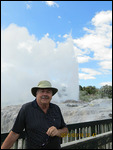
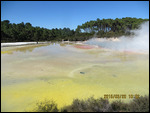
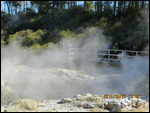
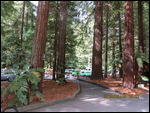
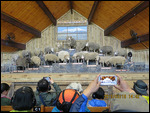



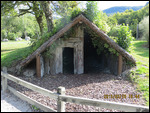
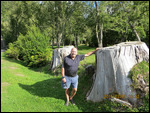
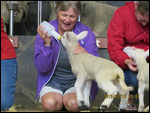
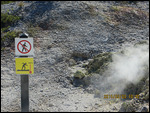
2025-05-23